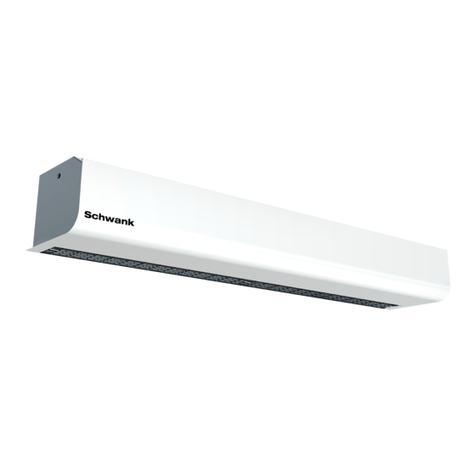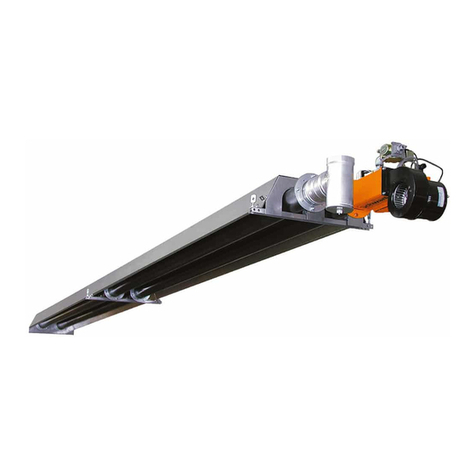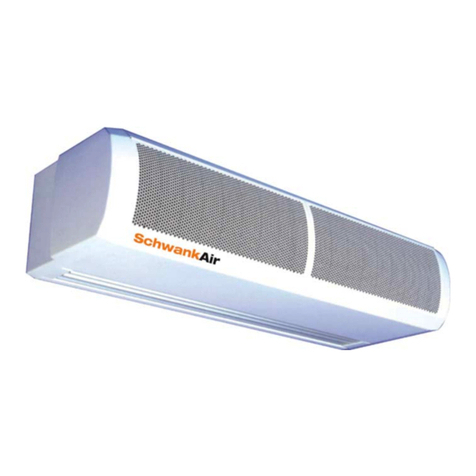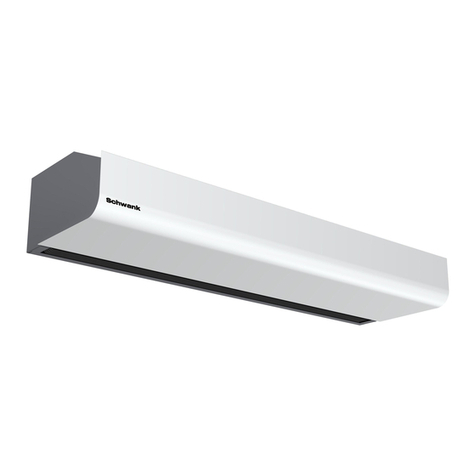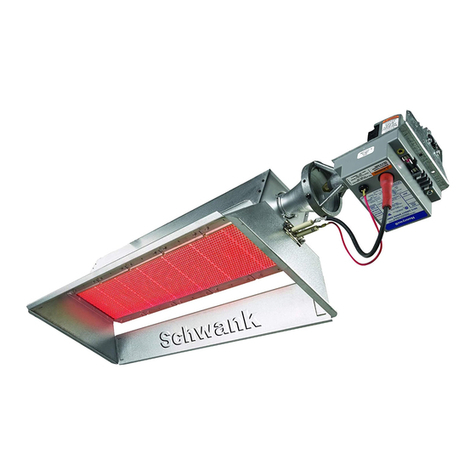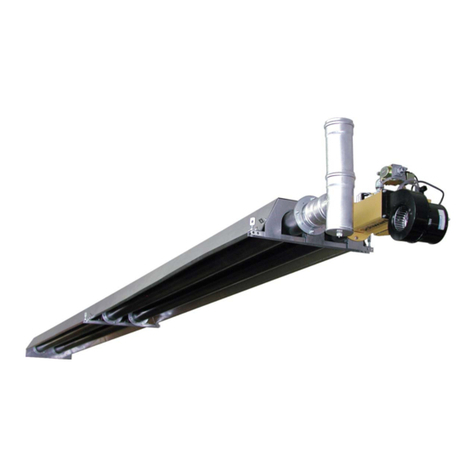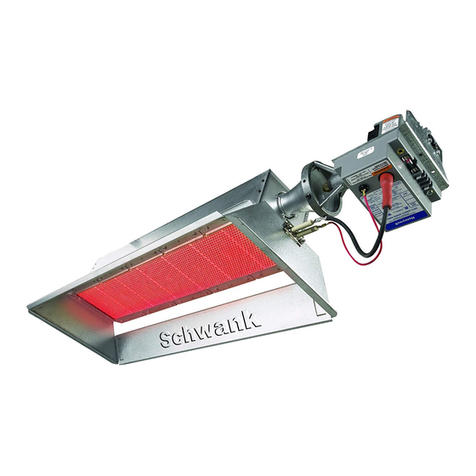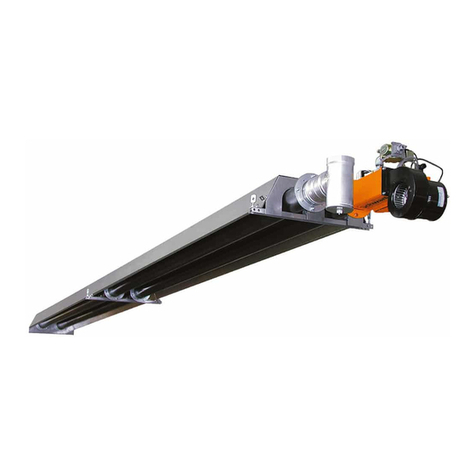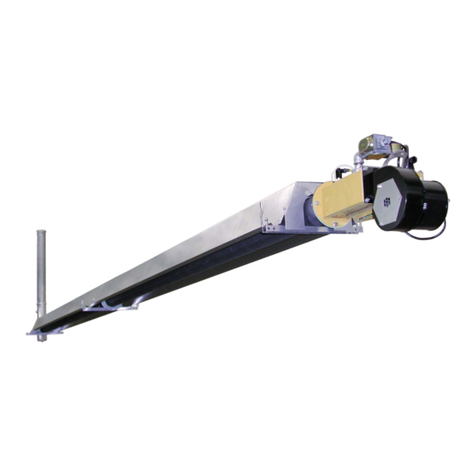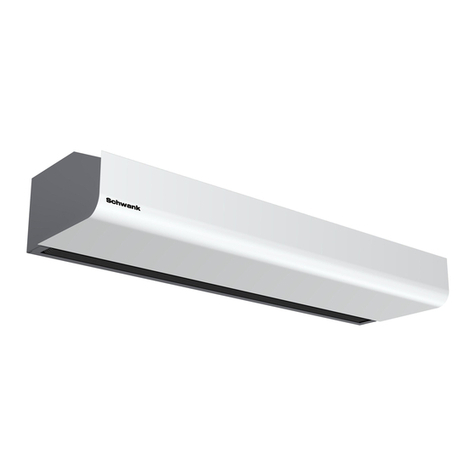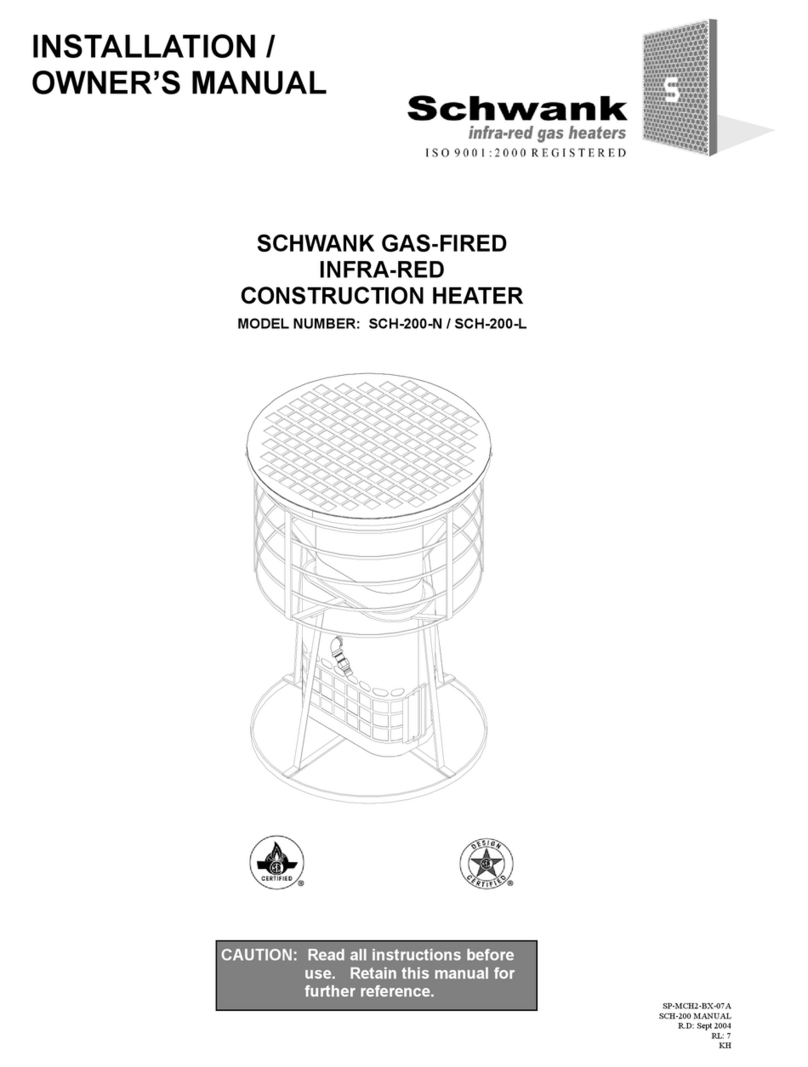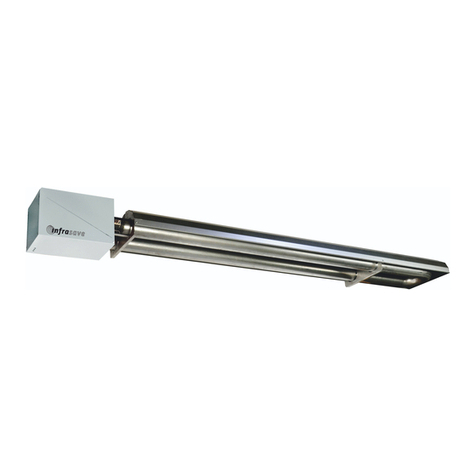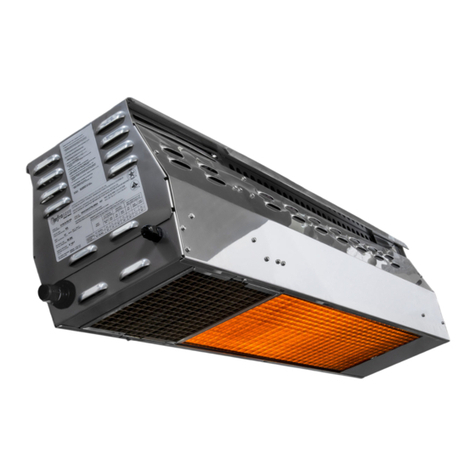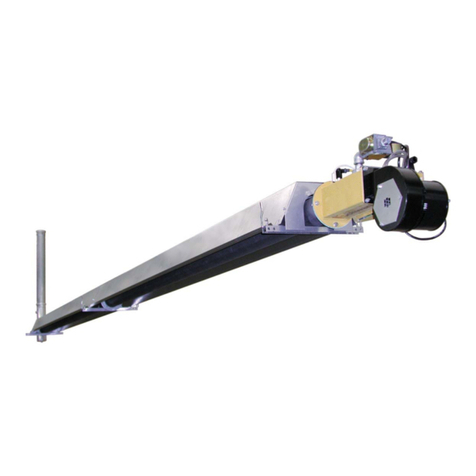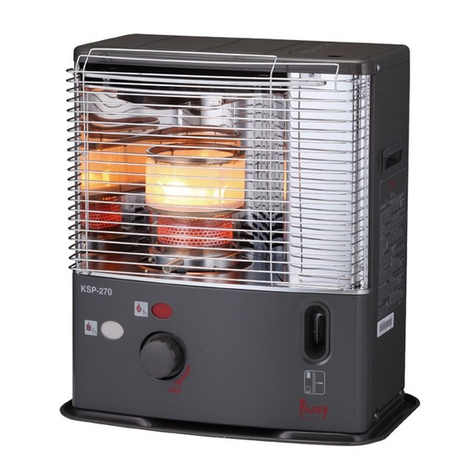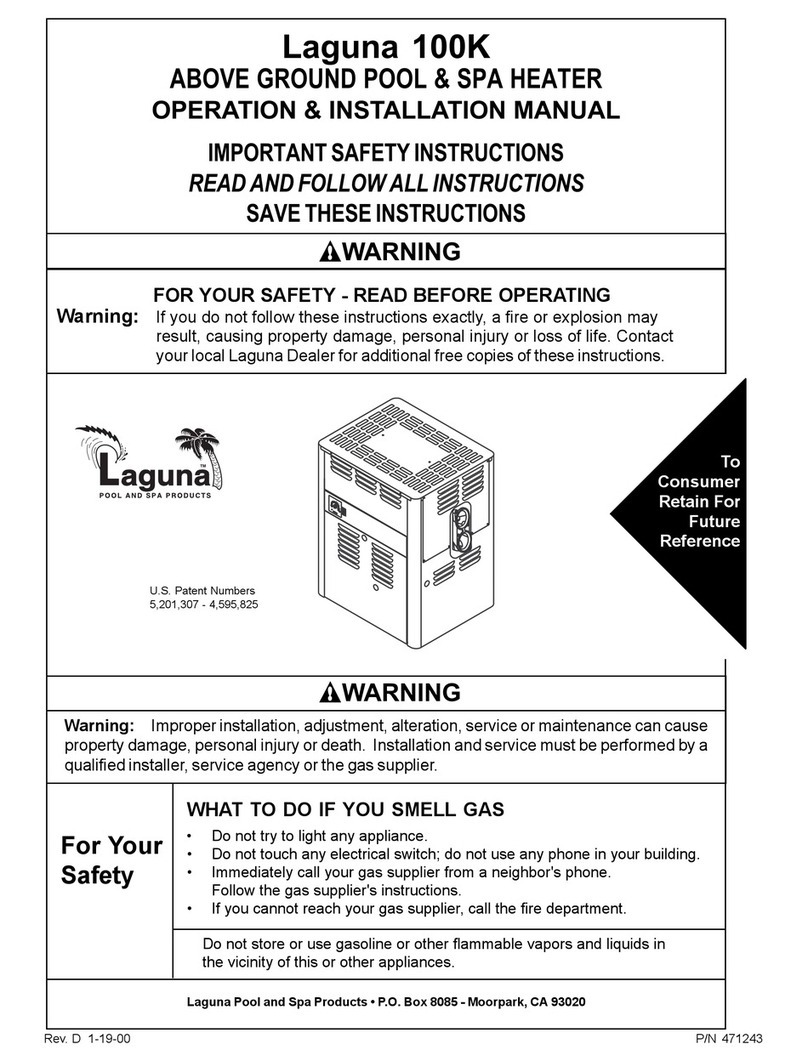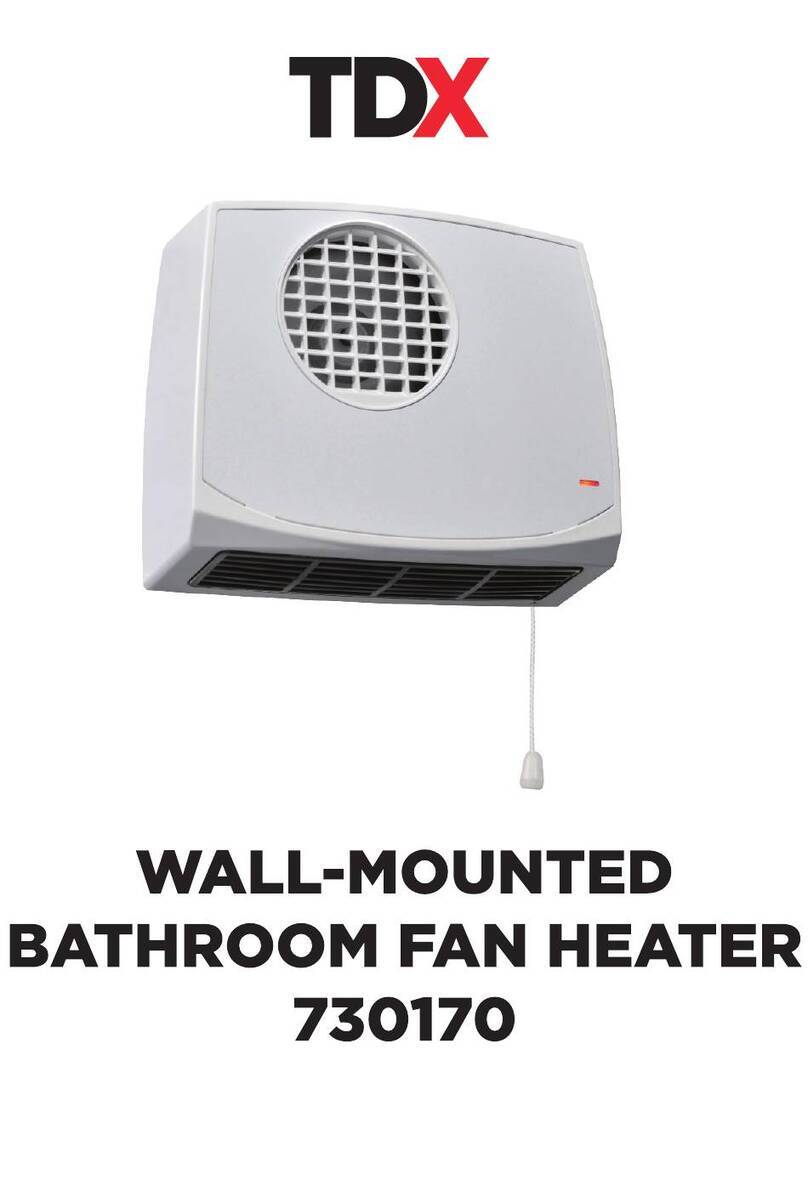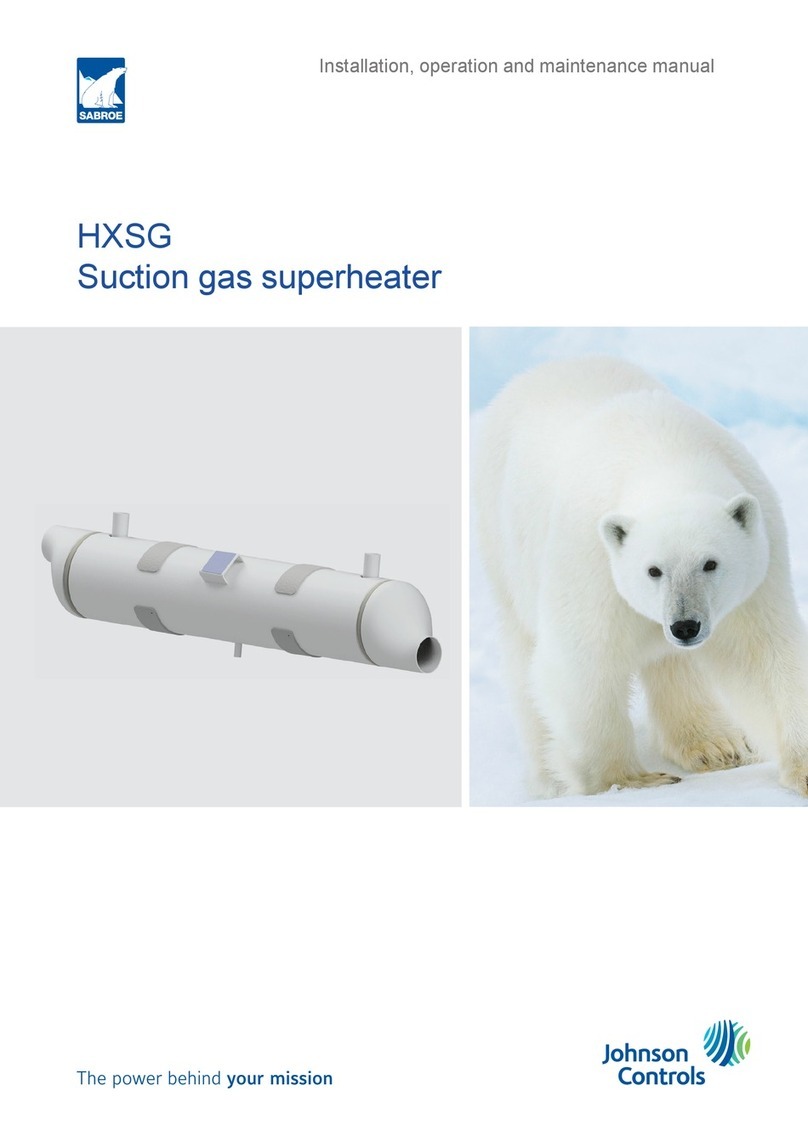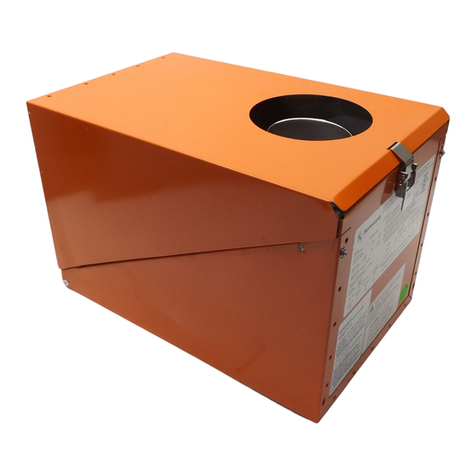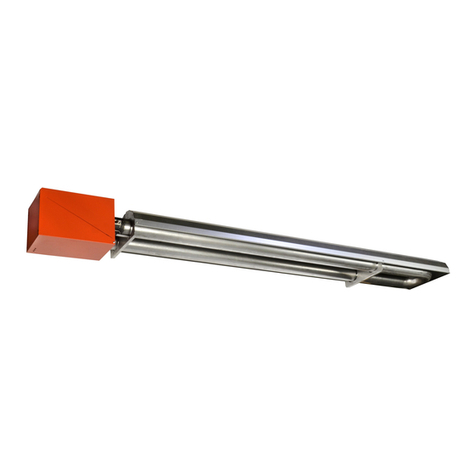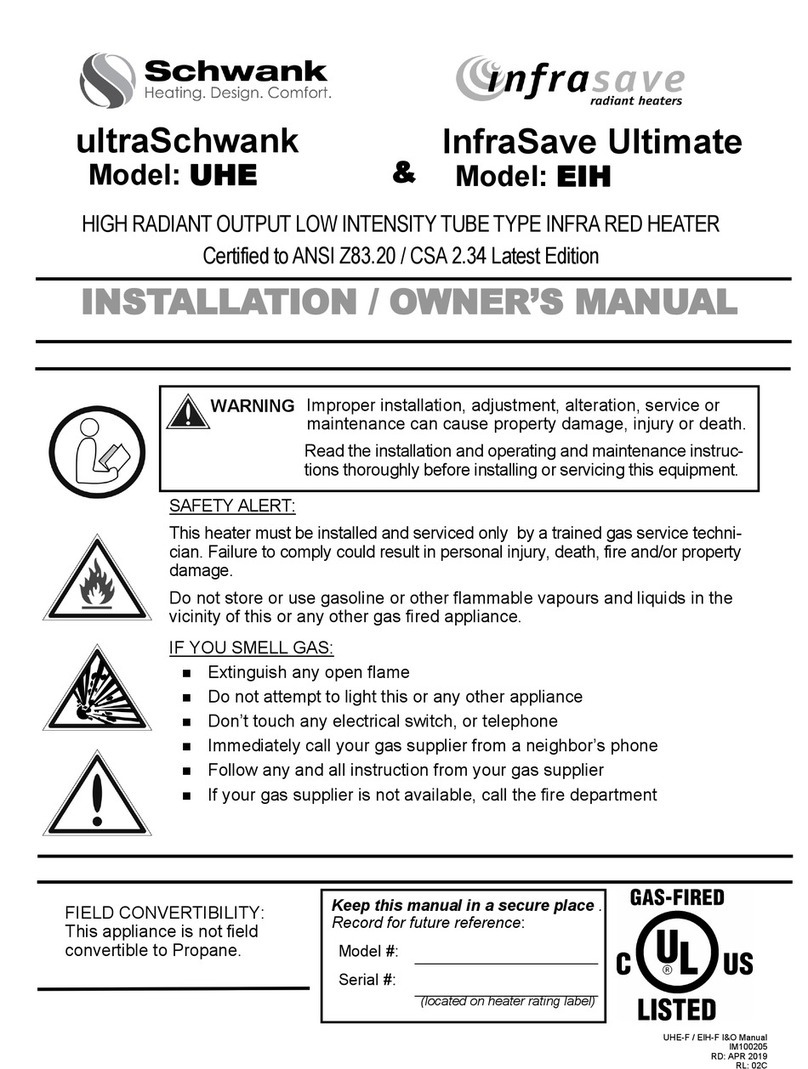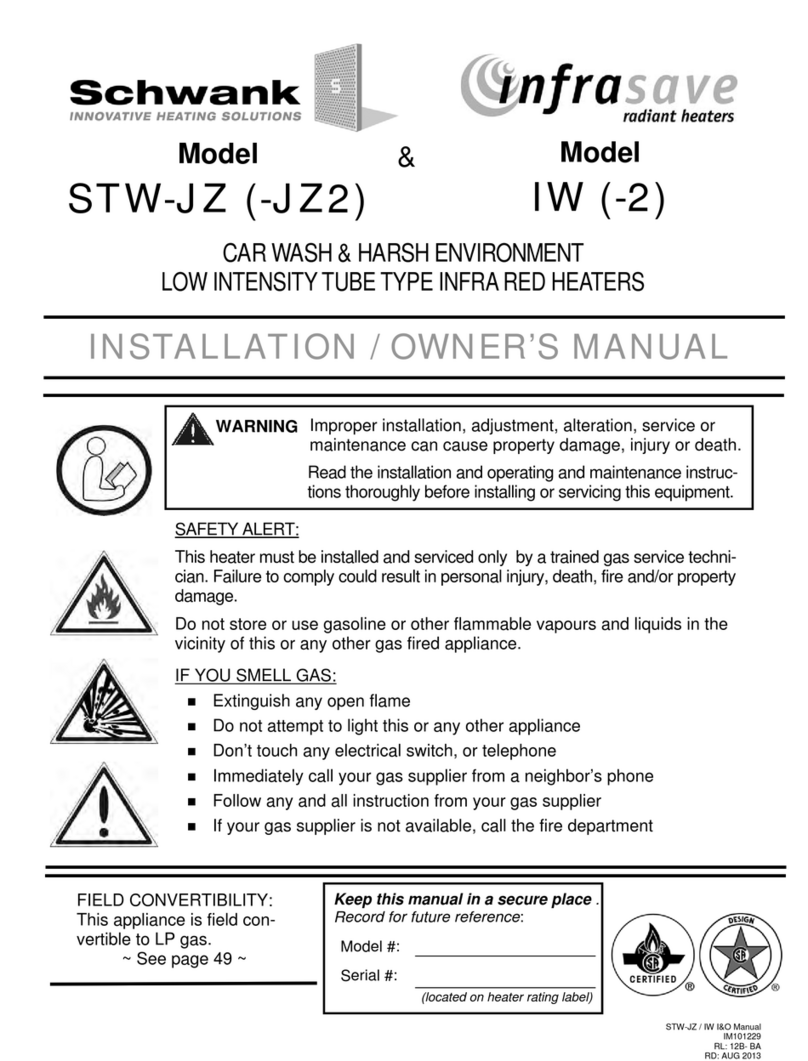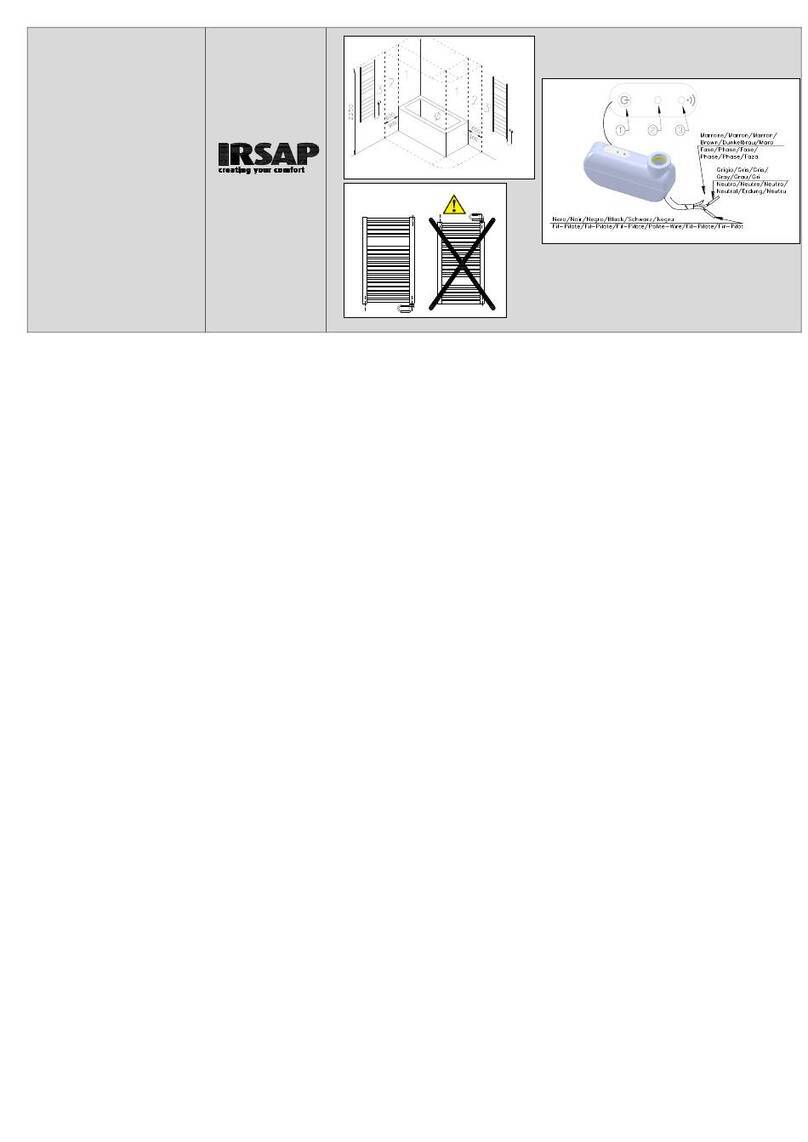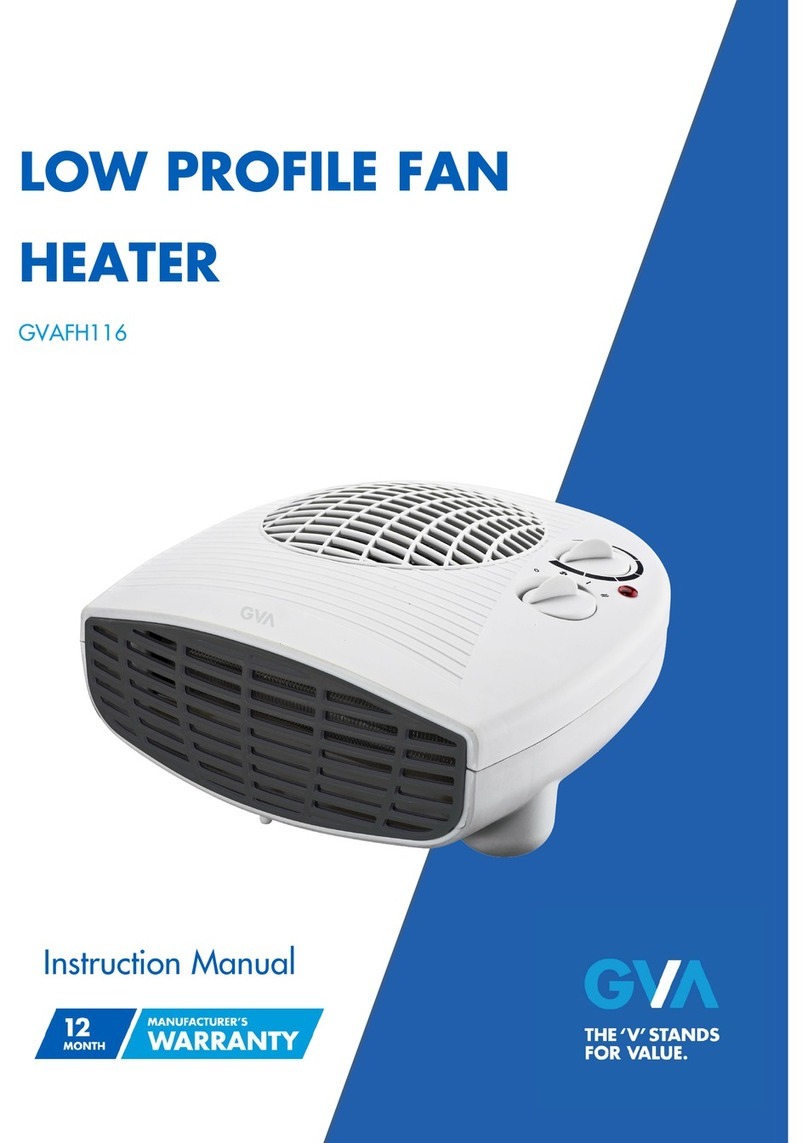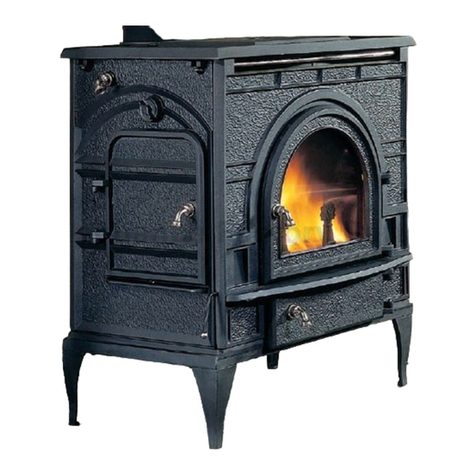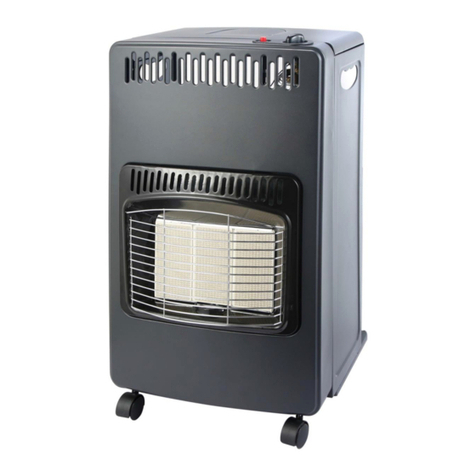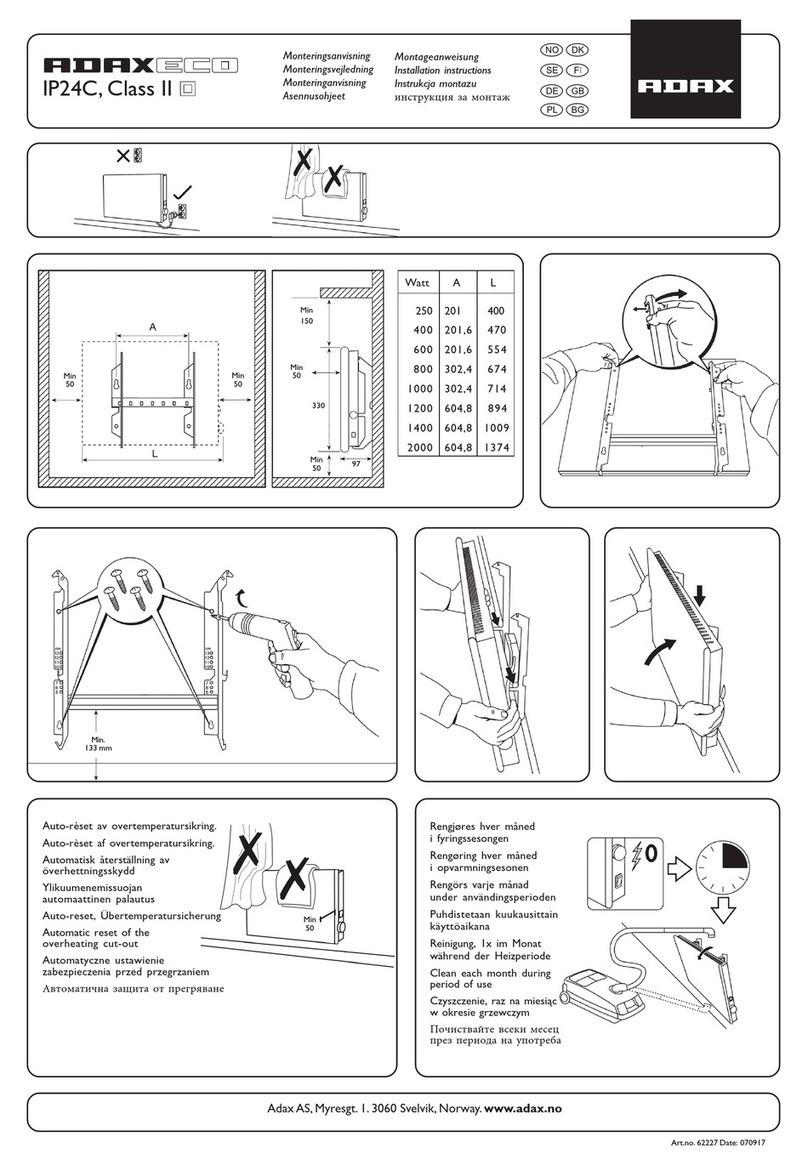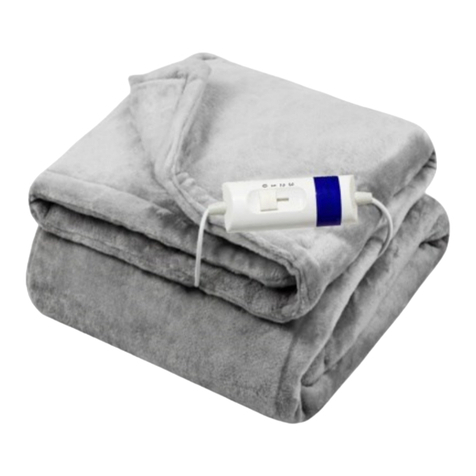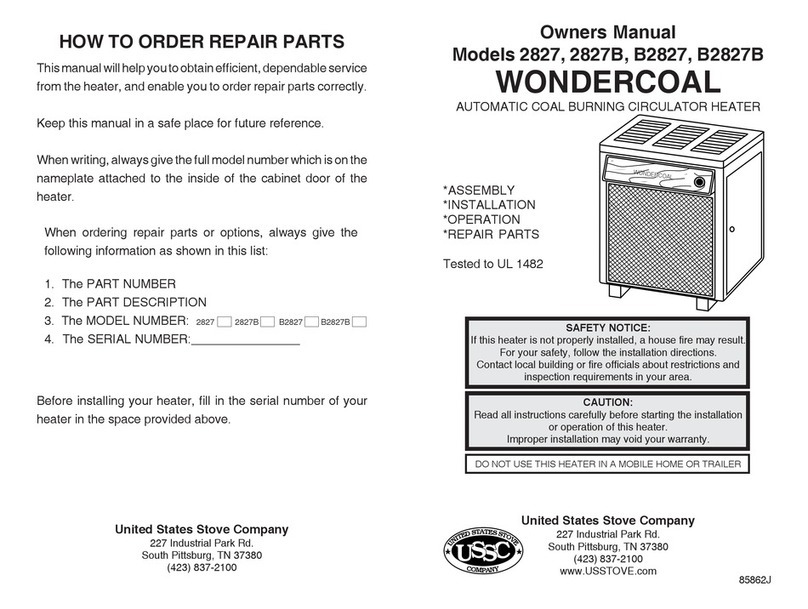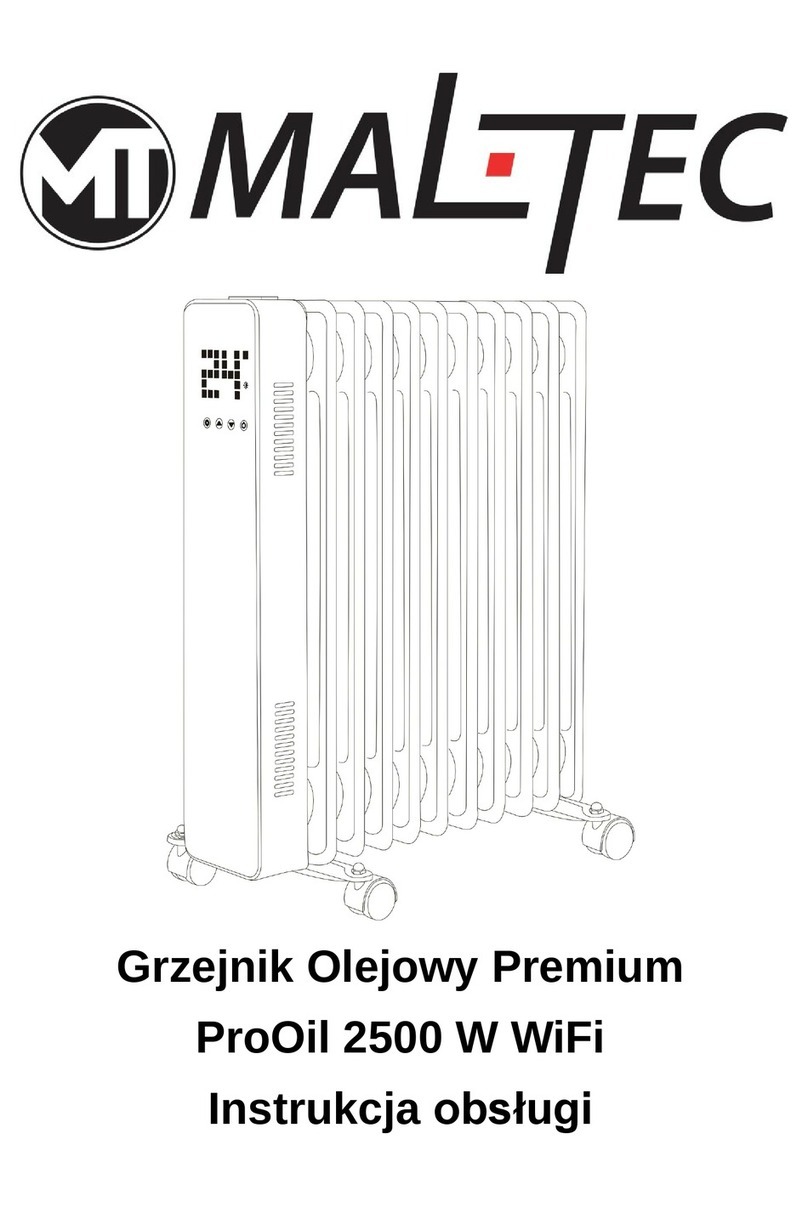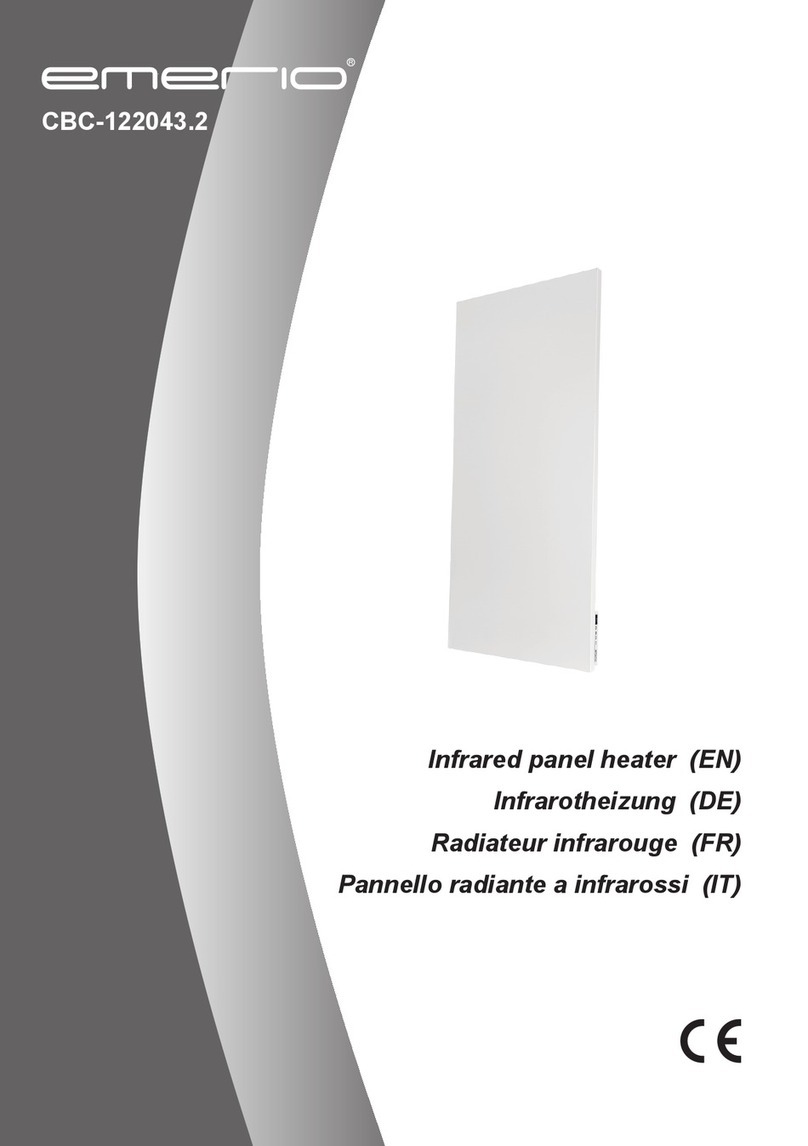11
SST Extreme X & SST Extreme S MODULATING I&O Manual
RD: JAN 2021
RL: 1A
4” 5”
4” 4” 5”
Combustion air duct must be constructed of noncombustible material. ‘’
for air duct, the corrugated sides of this tubing will contract and restrict air flow. A good
quality industry approved hard-wall flex is allowed.
When a tube heater is operated in a negative air condition or air-born dust or contaminants are pre-
sent as in woodworking, and welding shops, air for combustion must be ducted from outside the
negative or contaminated area to the 4 inch diameter intake flange supplied on the blower. Maxi-
mum system, vent and duct length is listed above.
• Do not exceed lengths listed above for total system and individual vent or air duct
• Total combined system length is reduced by five feet for every 90° elbow installed in the vent or
duct and in the tube system (see above for allowable total lengths)
• Exceeding the allowable lengths may create condensation or soot conditions and will void prod-
uct certification and warranty
The air intake will not be located less than:
• Three feet above grade
• Twelve inches from flue vent terminal of any heater with input up to 100,000 Btu/hr
• Three feet from flue vent terminal of any heater over 100,000 Btu/hr
An optional horizontal fresh air intake hood (JS-0532-VC) is available to bring combustion air to the
heater from an outside wall. If dropping air duct down from the roof, use an approved rain cap for the
duct terminal. Ensure adequate clearance around the air intake to allow sufficient combustion air
supply to the heater. When drawing fresh air from outside, it is recom-
mended that any single wall pipe containing cold air be insulated to reduce
condensation on the pipe surface.
: When outside-air duct drops down from the roof:
• Drop air duct to a Tee / drip leg to the side of the burner
• This will potentially reduce condensate and other moisture
accumulation at the blower
In locations where chlorinated Hydrocarbons are in use, such as Trichloroethylene or
Chloroethylene Nu it is essential that combustion air be brought in from a non-
contaminated area. Burning the fumes from these gases will create Hydrochloric acid
fumes, which are detrimental to humans, equipment and buildings. Typical sources of
other contaminants are paint removers, paints, refrigerants, solvents, adhesives, de-
greasers, lubricants, pesticides, etc.
The heater manufacturer cannot anticipate all types nor chemical composition of po-
tential contaminants at project sites. Prior to installation, confer with project site safety,
health and engineering staff and/or local authorities having jurisdiction such as the
Fire Marshall and Department of Labor for possible contaminants and any conflict with
the installation of hot surface heating equipment.




















